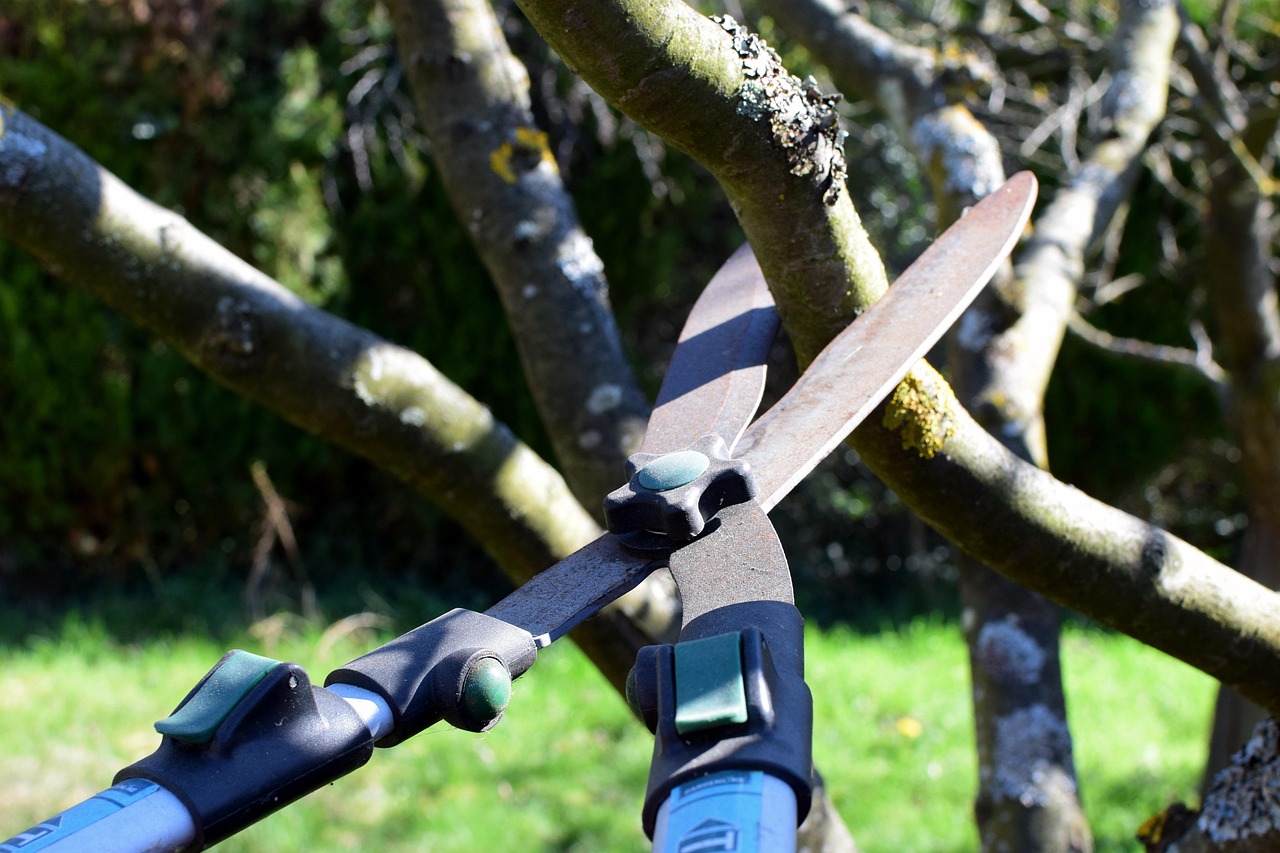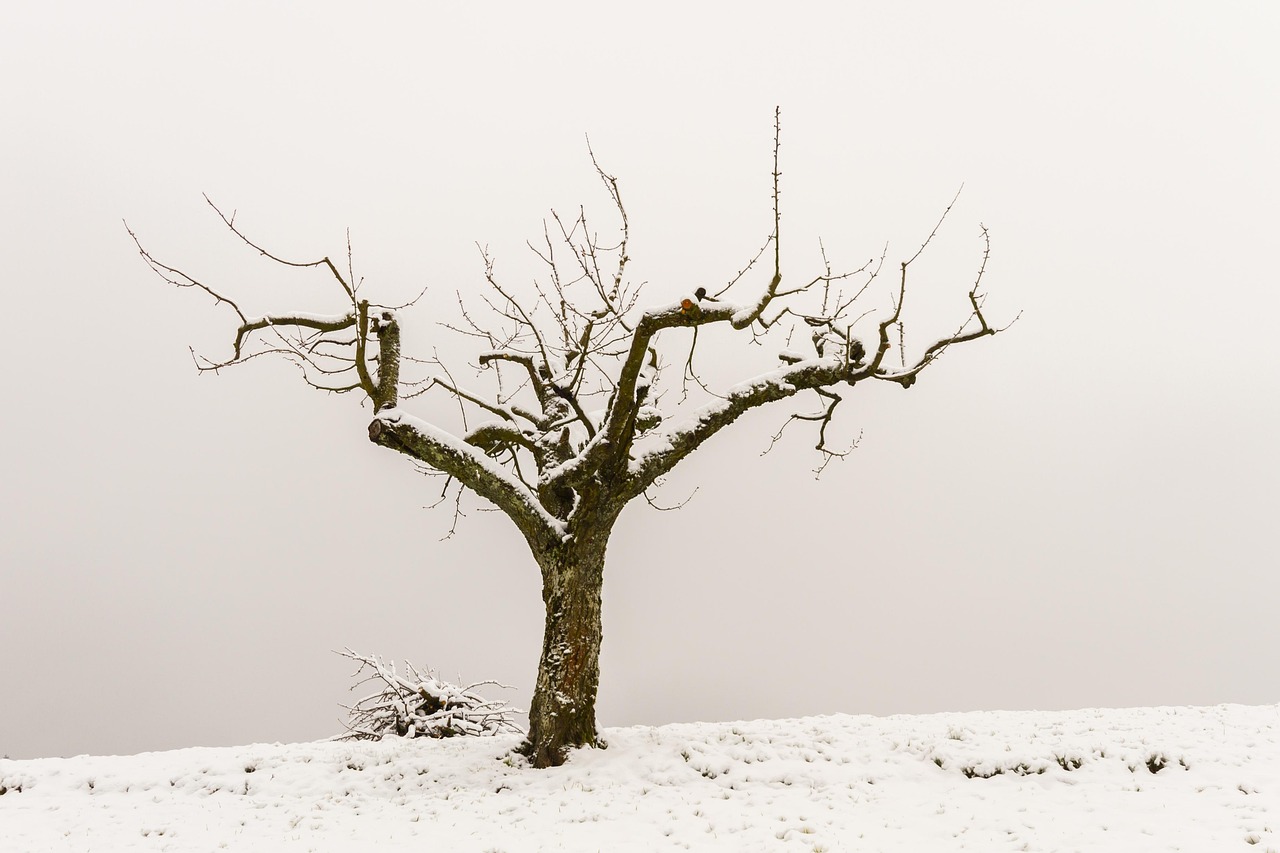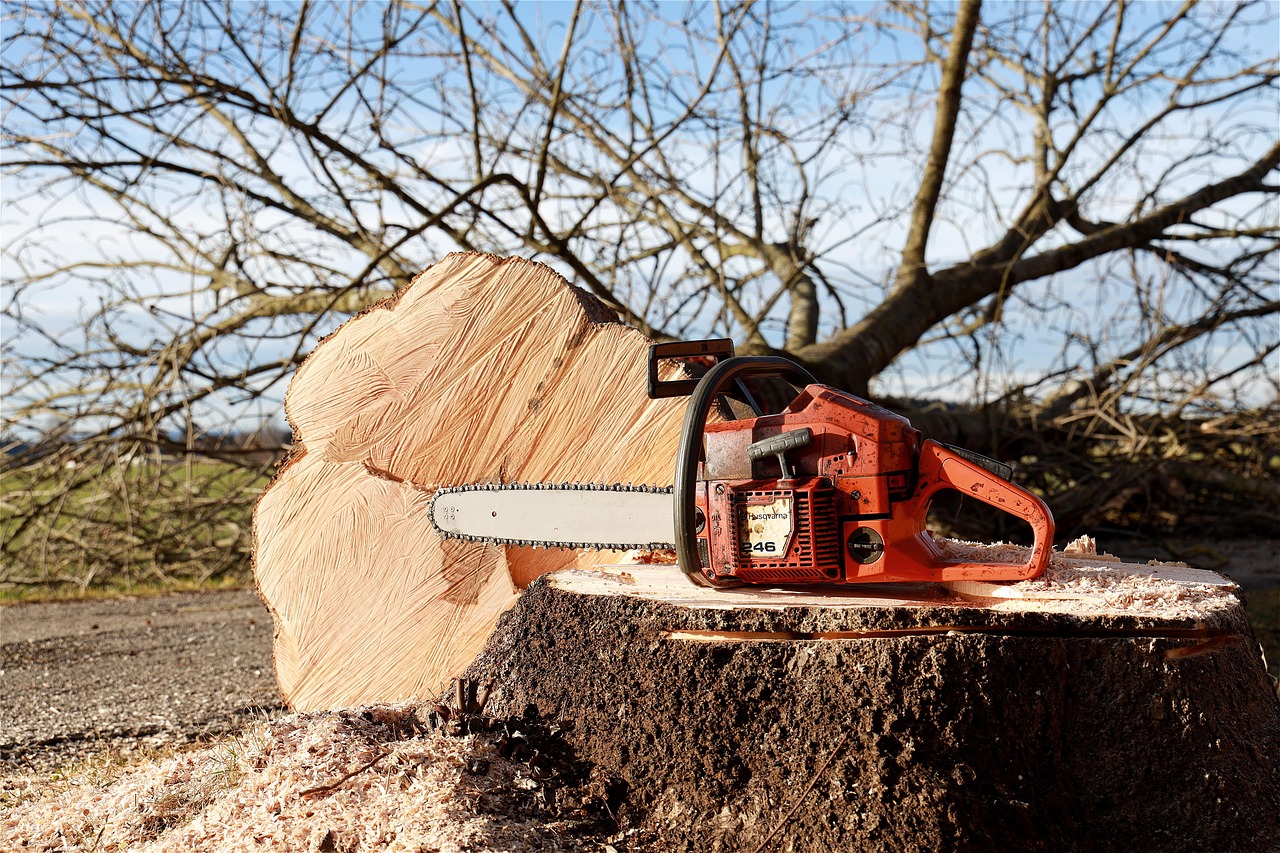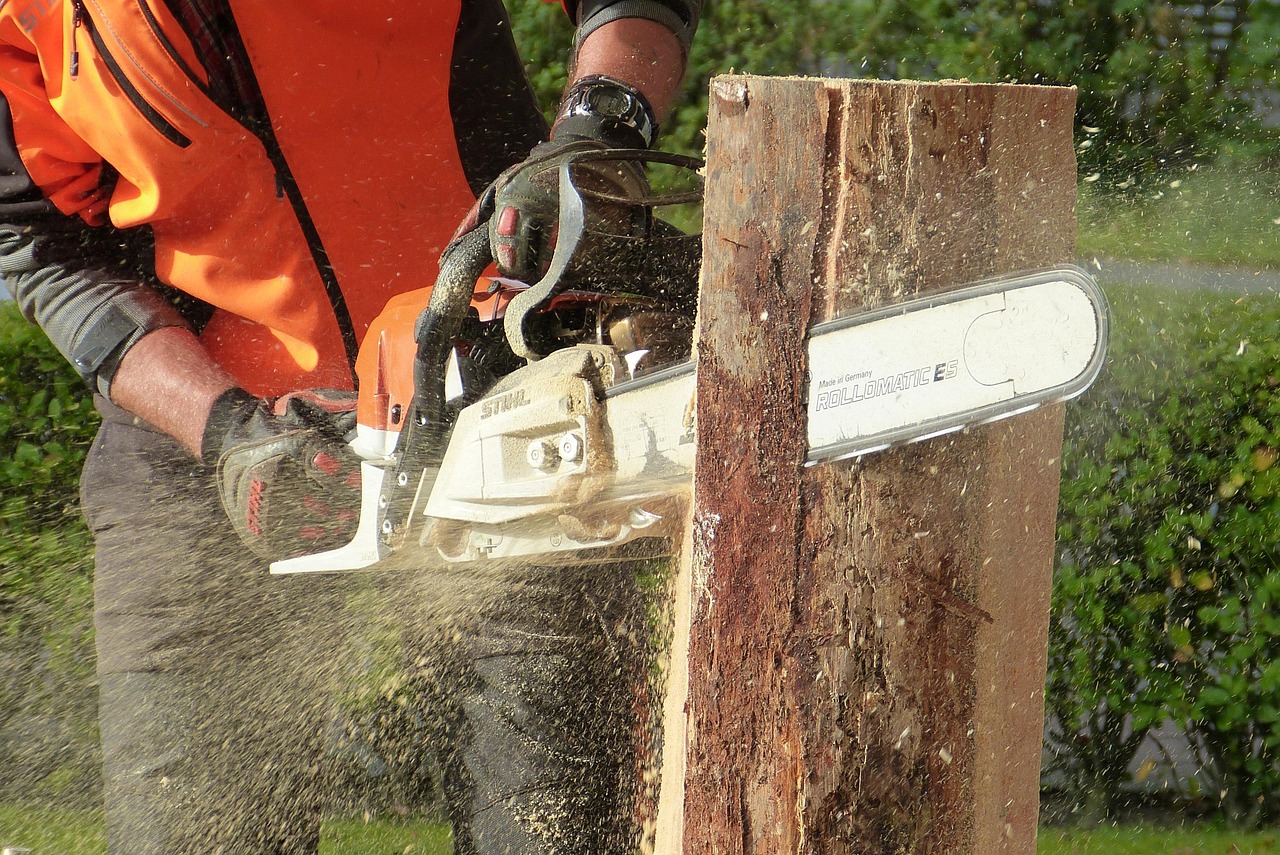Proper tree pruning enhances urban wildlife habitats by promoting tree health, supporting biodiversity, and creating safe nesting and feeding spaces. Using optimal techniques and timing ensures trees thrive, attract diverse species, and improve urban ecosystems. Community involvement and the right tools are vital for effective pruning and fostering resilient, wildlife-friendly city environments.
Urban environments often present challenges for wildlife due to habitat loss and fragmentation. Trees serve as vital resources for urban wildlife, providing food, shelter, and nesting areas. However, improper tree management can lead to unhealthy trees that do not support wildlife effectively. Understanding the right pruning techniques can make a significant difference in maintaining healthy trees that benefit urban ecosystems.

Pruning is not just about aesthetics; it plays a crucial role in tree health and wildlife support. Different species require different pruning methods. For example, flowering trees may need specific cuts to enhance their blooms and attract pollinators. Furthermore, understanding the best time to prune is essential, as it can vary by tree species and the local climate.
Understanding Tree Pruning Techniques
Tree pruning involves cutting away specific parts of a tree to encourage healthy growth and improve its structure. There are several key techniques that can be employed when pruning trees in urban areas, each with specific benefits for both the tree and the wildlife it supports.
Types of Pruning Techniques
- Thinning: This technique involves selectively removing branches to improve air circulation and light penetration. Thinning helps reduce overcrowding and allows more light to reach lower branches, promoting a healthier tree structure.
- Reduction: Reduction pruning removes the length of branches to decrease the overall size of the tree. This technique is useful for managing tree height and preventing branches from interfering with power lines or buildings.
- Raising: Raising involves removing the lower branches of a tree to create clearance for pedestrians or vehicles. While this can improve access, care should be taken to ensure that it does not remove critical habitat for wildlife.
- Cleaning: This technique focuses on removing dead, dying, or diseased branches. Cleaning helps maintain tree health and reduces the risk of pests and pathogens that could harm both the tree and surrounding wildlife.
Timing and Seasonal Considerations
The timing of pruning is essential for maximizing its benefits. Different species have varying optimal pruning times, primarily influenced by their growth cycles. Generally, late winter or early spring is considered the best time for most deciduous trees. This period allows trees to heal quickly as they enter their active growth phase.

However, flowering trees may require different timing. For instance, those that bloom in spring should be pruned after flowering, while summer-blooming varieties can be pruned in late winter. Understanding these seasonal patterns is crucial for ensuring that pruning enhances both the tree’s health and its capacity to support wildlife.
Impact on Urban Wildlife
Pruning trees with wildlife in mind can significantly enhance urban habitats. Healthy trees provide essential resources such as food sources, nesting sites, and shelter from predators. For example, many birds rely on specific tree species for nesting. Pruning can also promote fruiting, which attracts various animals.
The following table summarizes some common tree species found in urban areas and their benefits to wildlife:

| Tree Species | Wildlife Benefits |
|---|---|
| Oak | Supports numerous insects; attracts birds and mammals. |
| Maple | Provides sap for birds; foliage hosts caterpillars. |
| Cherry | Fruits attract birds; flowers attract pollinators. |
| Pine | Shelter for small mammals; seeds feed birds. |
By implementing proper pruning techniques, urban planners and homeowners can create healthier environments for trees while supporting local wildlife populations. Engaging with community efforts to maintain green spaces can also amplify these benefits. It is essential to promote awareness about the importance of trees in urban settings and encourage responsible stewardship practices.
The role of trees in urban ecosystems cannot be overstated. They are integral to maintaining biodiversity, improving air quality, and enhancing the quality of life in cities. As such, understanding how to prune them effectively is key to fostering a thriving urban wildlife habitat.
Tools and Techniques for Effective Tree Pruning
To successfully implement pruning techniques that benefit both trees and urban wildlife, it is crucial to use the right tools and methods. Proper tools ensure clean cuts, which promote faster healing and reduce the risk of disease. Here is an overview of essential pruning tools:

- Hand Pruners: Ideal for small branches, hand pruners are perfect for making precise cuts. They are essential for detailed work on smaller trees and shrubs.
- Loppers: These are larger than hand pruners and designed for cutting thicker branches. Loppers provide more leverage and are suitable for branches up to two inches in diameter.
- Pruning Saws: For larger branches, a pruning saw is necessary. It allows for more significant cuts and is effective for branches that cannot be handled by pruners or loppers.
- Chainsaws: In some cases, especially for larger trees, a chainsaw may be needed. This tool should be used with caution and ideally by trained individuals.
- Safety Gear: Always wear protective gear such as gloves, goggles, and a hard hat when pruning. Safety should be a top priority during any tree maintenance activity.
Pruning Techniques That Promote Wildlife Habitat
Beyond the basic understanding of pruning tools, knowing specific techniques that enhance wildlife habitat is equally important. Certain practices encourage biodiversity and create favorable conditions for various species.
Encouraging Natural Growth Forms
When pruning, it is often beneficial to encourage the natural growth form of a tree. This involves making cuts that allow trees to develop their natural shape rather than forcing them into an unnatural form. Here are some techniques to achieve this:
- Selective Pruning: Remove only specific branches to improve light penetration and air circulation without altering the overall shape.
- Crown Raising: Lift the lower branches without removing too many at once. This allows for better access for wildlife while maintaining tree integrity.
- Crown Thinning: Thin out branches in the upper crown to allow sunlight to filter through. This supports undergrowth, which can be a habitat for smaller wildlife.
Creating Wildlife-Friendly Features
Incorporating features that specifically attract wildlife can enhance the habitat provided by urban trees. Consider the following practices:
- Nesting Sites: Leave dead or decaying branches in place when possible. These can serve as nesting sites for birds and insects.
- Fruit Production: Prune fruit trees to maximize fruit production, which attracts various animals, including birds and mammals.
- Flowering Enhancements: For flowering trees, prune at the right time to promote abundant blooms, attracting pollinators such as bees and butterflies.
Identifying Tree Health Before Pruning
Before undertaking any pruning task, it is crucial to assess the health of the tree. Identifying signs of disease or damage helps ensure that pruning does not inadvertently harm the tree or diminish its ability to support wildlife.
Signs of a Healthy Tree
A healthy tree typically exhibits several characteristics:
- Vibrant Foliage: Leaves should be lush, green, and free from discoloration or spots.
- Strong Structure: The trunk should be straight, and branches should grow evenly without significant leaning.
- No Signs of Infestation: Look for signs of pests such as holes in leaves or frass (insect droppings).
Common Tree Problems to Address
Recognizing issues early can prevent further damage. Here are common problems to look out for:
- Disease Symptoms: Yellowing leaves, wilting branches, or unusual growth patterns may indicate disease.
- Pest Infestation: Check for visible pests or webs that could harm tree health.
- Dead or Dying Branches: Remove these branches to prevent decay from spreading to healthier parts of the tree.
The Role of Community in Tree Care
Community involvement is essential in maintaining urban trees and promoting wildlife habitats. Local organizations, schools, and neighborhoods can collaborate on tree care initiatives that benefit both residents and wildlife.
Community Engagement Strategies
Here are some effective strategies for fostering community engagement in urban tree care:
- Tree Planting Events: Organize community events focused on planting new trees in parks or public spaces. This helps expand urban tree canopies.
- Educational Workshops: Host workshops on proper pruning techniques, tree care, and the importance of urban forests to raise awareness.
- Adopt-a-Tree Programs: Encourage residents to take responsibility for specific trees in their neighborhoods, ensuring regular care and monitoring.
Through these strategies, communities can work together to create an environment that not only enhances urban aesthetics but also provides vital habitats for local wildlife. Involving residents in tree care fosters a sense of ownership and responsibility towards preserving natural resources within urban landscapes.
Advanced Pruning Techniques for Specific Tree Species
Understanding the unique needs of different tree species is essential for effective pruning. Each type of tree has specific growth patterns and characteristics that can influence how they should be pruned. This section discusses advanced pruning techniques tailored to various tree species commonly found in urban settings.
Deciduous Trees
Deciduous trees, which lose their leaves in the fall, often require careful pruning to maintain their shape and health. Here are some techniques suitable for these trees:
- Heading Cuts: These involve cutting back branches to a bud or lateral branch, encouraging denser foliage. This technique is useful for promoting bushier growth.
- Thinning Cuts: This method removes entire branches back to their point of origin. It helps to control the size of the tree while allowing more light to penetrate.
- Renewal Pruning: For older deciduous trees, renewal pruning can rejuvenate growth by removing older branches and encouraging new shoots to emerge.
Coniferous Trees
Coniferous trees, or evergreens, retain their needles throughout the year. Pruning these types requires a different approach:
- Pinching: This technique involves removing the tips of new growth shoots to encourage denser foliage and a fuller appearance.
- Selective Thinning: Similar to deciduous trees, selectively thinning out older branches can enhance light and air circulation, which is essential for overall health.
- Candle Pruning: For pine trees, this method involves cutting off the new growth (candles) in late spring, promoting a denser crown and healthier tree structure.
Flowering Trees
Flowering trees play a significant role in attracting pollinators and enhancing urban biodiversity. Pruning these trees correctly is crucial for maximizing their blooms:
- Timing Considerations: It is essential to prune flowering trees after they bloom to avoid removing buds that will produce flowers. However, summer-blooming varieties can be pruned in late winter.
- Deadheading: This technique involves removing spent flowers, which can encourage more blooms and prolong the flowering period.
- Structural Pruning: Focus on shaping the tree during its formative years by removing competing leaders or crossing branches to promote a strong structure.
Understanding Tree Growth Patterns
To effectively prune trees, it is important to understand their growth patterns. Each tree species exhibits unique growth characteristics that can influence how and when they should be pruned.
Growth Habit Overview
The growth habit of a tree can be categorized into several types, each requiring different pruning approaches:
| Growth Habit | Description | Pruning Focus |
|---|---|---|
| Erect | Trees that grow straight up with a central leader. | Encourage upward growth and remove competing leaders. |
| Spreading | Trees with wide branches that spread out horizontally. | Thin out branches to reduce crowding and improve light access. |
| Pendulous | Trees with drooping branches. | Support necessary branches while controlling height. |
Impact of Growth Patterns on Wildlife
The growth patterns of trees also influence the types of wildlife they can support. For example:
- Erect Trees: These often provide nesting sites for birds due to their sturdy structure and height.
- Spreading Trees: They create ample shade and ground cover, benefiting various insects and small mammals.
- Pendulous Trees: The drooping branches may offer shelter for smaller birds and insects that thrive in lower foliage.
The Importance of Soil and Water Management
A healthy tree requires not only proper pruning but also adequate soil and water management. Urban environments often present challenges in these areas, which can impact tree health and wildlife habitat quality.
Soil Health Considerations
The soil surrounding urban trees plays a critical role in their health. Trees rely on nutrient-rich soil for proper growth:
- Nutrient Management: Regular testing of soil can help identify nutrient deficiencies. Adding organic matter or specific fertilizers can enhance tree health.
- Compaction Prevention: Soil compaction from foot traffic or heavy machinery can hinder root development. Implementing protective barriers around tree roots can mitigate this issue.
- Mulching: Applying mulch around the base of trees helps retain moisture, suppress weeds, and provide nutrients as it decomposes.
Watering Practices
Sufficient water supply is essential for maintaining tree health, especially in urban settings where water may be limited:
- Irrigation Planning: Establish a regular watering schedule, particularly during dry spells. Young trees may require more frequent watering until established.
- Rainwater Harvesting: Utilizing rain barrels can provide an eco-friendly water source for urban trees, helping conserve municipal water supplies.
- Drought Resistance Strategies: Select drought-resistant tree species where possible and employ deep watering techniques to encourage deeper root growth.
A holistic approach that combines appropriate pruning techniques with effective soil and water management will ensure that urban trees thrive. This will ultimately foster healthier habitats for local wildlife, contributing positively to urban biodiversity.
Enhancing Urban Biodiversity Through Pruning Practices
Pruning trees in urban environments is not merely a maintenance task; it is an opportunity to enhance biodiversity and support local wildlife. By utilizing the techniques discussed in this article, urban planners, homeowners, and community members can create healthier ecosystems. The combination of proper pruning, soil management, and adequate watering practices can significantly improve the resilience of urban trees and the wildlife that depend on them.
It is also essential to consider the overall landscape design when planning for tree planting and pruning. Integrating various native plant species alongside trees can further enrich the habitat, providing diverse food sources and shelter for wildlife. Native plants are often more resilient to local pests and diseases and require less maintenance than non-native varieties. Thus, incorporating them into urban landscapes can create a more sustainable environment.
Benefits of Urban Trees Beyond Wildlife
Urban trees offer a multitude of benefits that extend beyond providing habitats for wildlife. Some key advantages include:
- Improved Air Quality: Trees absorb pollutants and produce oxygen, contributing to cleaner air in urban areas.
- Climate Regulation: Trees help mitigate the urban heat island effect by providing shade and releasing moisture through transpiration.
- Stormwater Management: Tree canopies capture rainfall, reducing runoff and lowering the risk of flooding in urban areas.
- Aesthetic Value: Trees enhance the visual appeal of neighborhoods and public spaces, promoting mental well-being among residents.
These benefits illustrate the essential role that trees play in urban ecosystems. When communities prioritize tree health through effective pruning techniques and proper care, they invest in a brighter future for both wildlife and residents.
Encouraging Community Involvement
Fostering a sense of community involvement is crucial in establishing a culture of care for urban trees. Engaging local residents in tree care initiatives can create lasting connections between people and their environment. Here are some strategies to encourage participation:
- Volunteer Days: Organize events where community members can come together to prune, plant, or care for trees in local parks or neighborhoods.
- Partnerships with Schools: Collaborate with schools to create educational programs that teach students about trees, pruning techniques, and the importance of biodiversity.
- Social Media Campaigns: Utilize social media platforms to share success stories and promote upcoming tree care events, encouraging more people to get involved.
When communities unite for a common cause, they not only enhance their natural surroundings but also build a stronger sense of pride and stewardship among residents.
Conclusion
The proper application of tree pruning techniques is vital for fostering healthy urban wildlife habitats. By understanding the specific needs of different tree species and implementing best practices in tree care, communities can contribute positively to urban biodiversity. Moreover, engaging community members in tree management initiatives can amplify these benefits, creating a collaborative spirit around environmental stewardship.
Ultimately, urban trees are indispensable assets that provide numerous ecological, social, and aesthetic benefits. By prioritizing their health and the well-being of urban wildlife through informed pruning practices, we can cultivate vibrant ecosystems that enhance the quality of life in our cities. As we look towards a sustainable future, let us recognize the integral role that trees play in shaping our urban landscapes and commit to caring for them responsibly.
